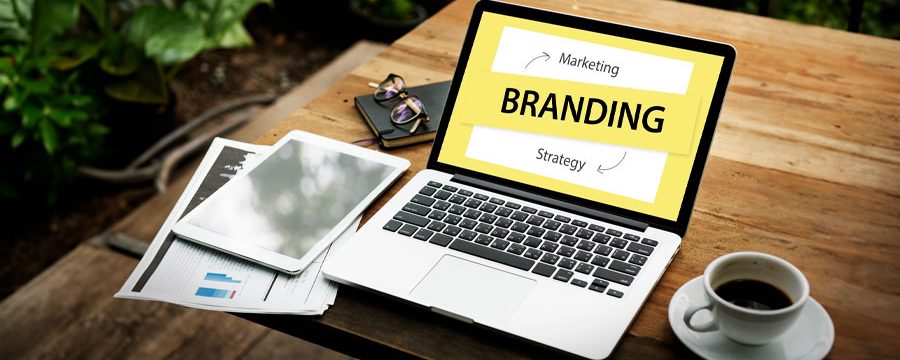As a graphic designer, every project you do for clients – no matter how simple or complex – is the result of a lot of thought, skill, and planning.
However, your image as a graphic designer extends beyond your portfolio. It’s important to consider the design impact of all your business documents, as they are an essential part of your brand and image. This includes your business card, social media pages, and – yes – even your graphic design invoice template.
What Will You Need to Determine Before Creating Your Invoice?
Invoicing for graphic design is different than invoices for other types of work. Why? Because they reflect your capabilities as a designer. Your designs are unique, and so are your invoices. That’s the approach you should take if you want to create a WOW effect with your invoicing for your graphic design work.
The first thing you should consider is what kind of impression you want to make with your invoice graphic design. Do you prefer an artsy look that shows your edginess? Or are you tending towards a smooth design that leaves more to the imagination? There’s no right or wrong answer – it depends on your brand identity and goals.
Now let’s dive deeper into the types of information you will need to present in your graphic designers’ invoice, and how best to present it.
How Are You Charging for Your Graphic Design Work?
There are various ways that graphic designers bill clients, depending on the work agreement. Are you working on a retainer? Billing per project? Perhaps you are billing an hourly rate? You may be working simultaneously on multiple projects – for example, a long-term project at an hourly rate, and a one-time project at a fixed predetermined price. Perhaps you have different hourly rates for different types of work.
Plus, you will probably have varied arrangements for different clients, so there may be a need to create several template styles. The way you bill will strongly affect the layout of the invoice. Once you’ve determined your billing style, you can set up your invoice graphic design template accordingly.
Design Correction And Approval - The "Ping-Pong” Stage
The creative process is highly collaborative and demands a lot of communication between the graphic designer and the client. Arriving at the final approved design often comes after a long, drawn-out process of “ping pong”. Design drafts go back and forth between you and the client, with suggestions, changes, corrections, and tweaks. This can be the most frustrating part of the design process, calling for your attention at irregular intervals.
In order to invoice for graphic design accurately, you’ll need to determine how you are going to bill for the time taken to get the design approved by the client. In some cases, the “back and forth” can take almost as much time, if not more, than the original design work! In any business, there’s no such thing as a free lunch, and this also applies to graphic design changes, no matter how small. Some designers track the time spent on the approval process and then charge an hourly rate. Others prefer to raise the overall price of the project and include a set number of “rounds” of corrections in the price – say, 3 rounds of corrections. Whichever method you prefer, make sure it is crystal clear to the client at the outset, so your graphic design invoicing will reflect the true investment of your work.
Graphic Design Specifications
Graphic design projects vary wildly in their complexity – and that means your invoicing will too. You will need to consider how to add the charges for different specifications, including producing designs in different dimensions, colors, and formats. Will your invoice list each specification as a separate item, or will you charge for them in an all-inclusive package? These sorts of details will determine the right graphic design invoice example for you.
The Overall Design Style
When it comes to invoicing for graphic designers, the question of design style is more important than other types of businesses. That’s because an invoice template for graphic designers is essentially an advertisement for your skills and style. You want it to present an accurate picture of your graphic design business and what you have to offer.
However, there are different ways to approach the question of design style. Do you make your invoices look super impressive and show off your skills with all the bells and whistles? Or do you go for a more modest, understated look that won’t distract from your design work and portfolio? A clean and simple invoice template is easy for the customer to understand, yet doesn’t take advantage of the opportunity to impress the customer as a fancier invoice would.
It boils down to the question of: what impression do you want to communicate to customers with your invoice design? The decision will come from the answer to that key question.
Personal vs Professional
As a freelance graphic designer, you have probably cultivated a more personal connection with customers. This presents another choice you’ll need to make for your graphic design invoice template. Do you want to create a totally professional look, or should you include a special personal touch to make your invoice stand out from the rest? It needn’t be anything too complicated. It could be as simple as a personalized thank you note added to the invoice. The tone of your invoice is another reflection of the style of your business, so make sure to consider whether you want to add a personal element, or if you should stick to a strictly professional design.
What Needs to Appear in Every Invoice?
Company name and business address
This should correspond to the official name and address registered to your company.Client name and business address
Make sure to check with the client their exact company name and address required for invoicing. It may differ from their email signature or website logo.Address of project
This is the address where the project was undertaken. In some instances, it may differ from your company’s registered address.Date
Specify the date the invoice was issued.Invoice number
The invoice number must appear clearly on the invoice. If you use a digital invoicing system, the number will be assigned automatically and in the correct chronological order.Payment terms
Outline the terms and conditions of the payment. For example, describe any penalty fees for late payment, or specify whether the payment can be made in installments.Invoice due date
Include the final date that the invoice payment is due.Item description
This is a description of the item you are billing for. “Logo design” and “Photoshop editing” are both examples of item descriptions commonly used by freelance graphic designers.Item quantity
This denotes the number of items, corresponding to the item description. So, if you charge a flat rate, the item quantity is “1”. If you charge by the hour, the item quantity represents the number of hours worked.Amount owed
This is the total amount due from the client for the completed graphic design work.Payment information
Outline the details of how the client should pay. You can provide bank account details for bank transfers, a postal address for a check, an ID for a Paypal account, or any other relevant information the client should know.Your Invoice Design Reflects Your Business – Make It Count!
For freelance graphic designers, an invoice is not just an invoice. It’s an example of your skill, style, and experience, and it’s one that your clients will be seeing on a regular basis. Make sure to create the perfect, functional and beautiful invoice template that also reflects the unique identity of your graphic design business.



